Looking for a low-cost futures trading platform? Here’s what you need to know.
The right platform can save you thousands in trading fees annually. This guide breaks down six popular futures trading platforms – NinjaTrader, Tradovate, AMP Futures, Optimus Futures, Interactive Brokers, and Webull – focusing on commissions, hidden fees, and features.
Key highlights:
- NinjaTrader: Offers $0.09 per micro contract for lifetime license holders and $99/month commission-free plans.
- Tradovate: Subscription-based plans ($99-$199/month) or $0.79 per side for standard trades.
- AMP Futures: Competitive per-contract rates starting at $0.25 for high-volume traders.
- Optimus Futures: Commission starts at $0.25 per side for Micros with zero platform fees. Optimus Flow includes advanced DOM, footprint charts, and volume profile at no additional cost.
- Interactive Brokers: Tiered pricing from $0.85 to $0.15 per contract with global market access.
- Webull: Simple flat-fee structure with a user-friendly interface, ideal for beginners.
Quick Tip: Always factor in extra costs like exchange, clearing, and data fees when comparing platforms. Lower commissions don’t always mean lower overall costs.
Here’s how these platforms stack up to help you make an informed choice.
The @futuresfanatic ‘s Favorite Futures Brokers For Beginners
1. NinjaTrader
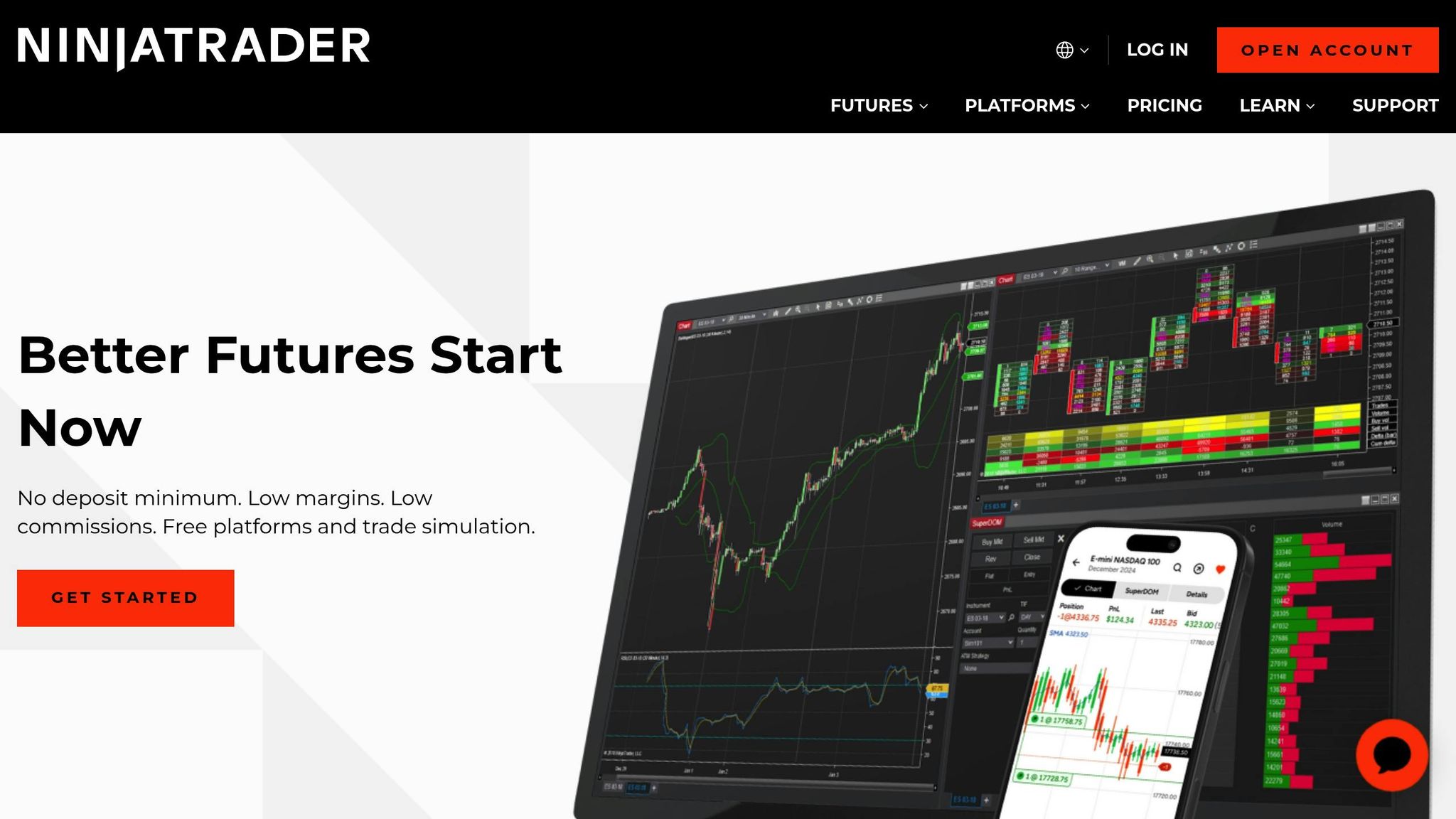
NinjaTrader provides an affordable way to trade futures, offering flexible pricing options and advanced tools tailored for both new traders and seasoned professionals.
Commission Rates
NinjaTrader gives you three pricing models to choose from: lifetime licenses, leasing options, and subscriptions. If you go with the lifetime license, you’ll enjoy lower per-contract fees, making it a great choice for frequent traders. The other pricing options are designed to accommodate different trading volumes. Keep in mind, though, the listed rates don’t include extra fees.
Hidden Fees
Be aware of potential additional costs. These might include charges for exchange access, clearing, regulatory fees, inactivity penalties, or premium data services. It’s a good idea to check the latest fee disclosures to avoid surprises.
Margin Requirements
NinjaTrader follows standard industry guidelines for margin requirements. They offer lower day-trading margins, making it easier for active traders to manage their positions. Plus, their real-time margin calculations and automated risk management tools help keep your trading on track.
Platform Features
NinjaTrader isn’t just about pricing – it’s packed with features designed to make trading more efficient. Here’s what stands out:
- Advanced charting tools: Customize charts with a variety of technical indicators to suit your trading style.
- Automated trading: Use the strategy builder to create automated systems – no coding required.
- Backtesting and market replay: Test your strategies using historical data to see how they’d perform in real-world scenarios.
- Mobile access: Stay connected and monitor your trades anytime, anywhere.
Whether you’re analyzing the market, testing strategies, or trading on the go, NinjaTrader provides the tools to help you trade smarter.
2. Tradovate
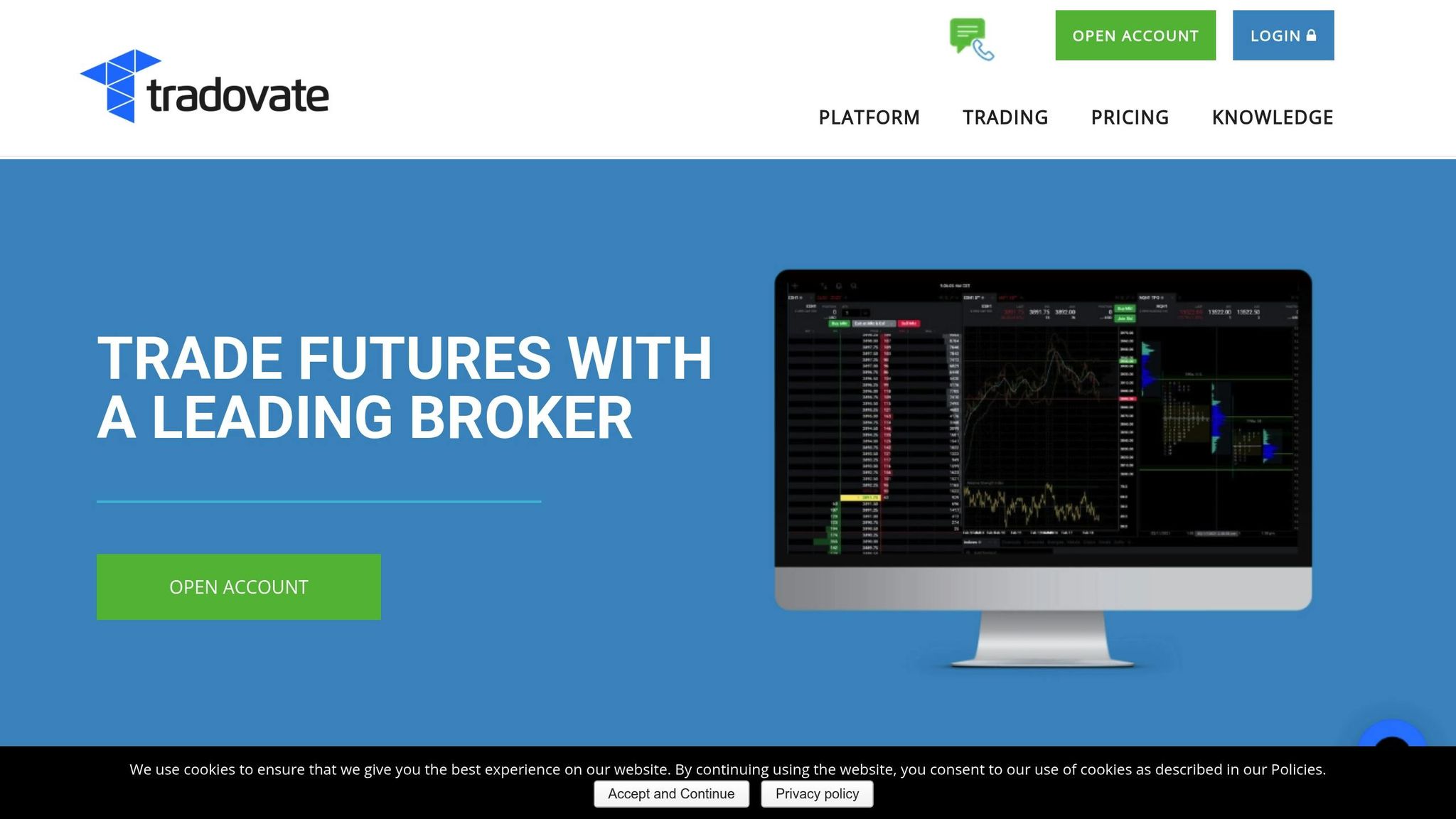
Tradovate is a web-based platform designed specifically for futures trading. It focuses on simplicity and competitive pricing, making it a streamlined choice for traders who prefer to avoid the complexities of multi-asset platforms.
Commission Rates
Tradovate offers flexible pricing options to suit different trading needs. You can choose a membership plan with a fixed monthly fee that allows unlimited trades or opt for a pay-per-trade model, which charges per contract plus exchange fees. For those seeking advanced features, higher-tier plans provide access to enhanced order types and more detailed market data.
Hidden Fees
While Tradovate doesn’t charge inactivity fees or impose penalties for low account balances, it’s important to note that standard exchange and regulatory fees apply per contract. Additionally, subscribing to real-time market data comes with extra costs.
Margin Requirements
Tradovate follows exchange-minimum margin requirements for overnight positions but offers reduced margins for day trading. To help traders manage their risk, the platform provides real-time margin calculations and integrated position sizing tools. Risk management features include customizable stop-loss orders and position limits, giving you more control over your trading capital. These tools are designed to help avoid margin calls and support effective capital management.
Platform Features
Tradovate’s browser-based platform is built for speed and efficiency. It offers one-click trading and customizable hotkeys for quick execution. Key features include advanced charting tools, depth-of-market trading, and a strategy builder that supports algorithmic trading. Mobile apps for both iOS and Android allow you to monitor and manage your trades on the go. For those looking to refine their strategies, a paper trading environment with simulated market data is available, along with integrated trade analytics to track and improve performance over time.
3. AMP Futures
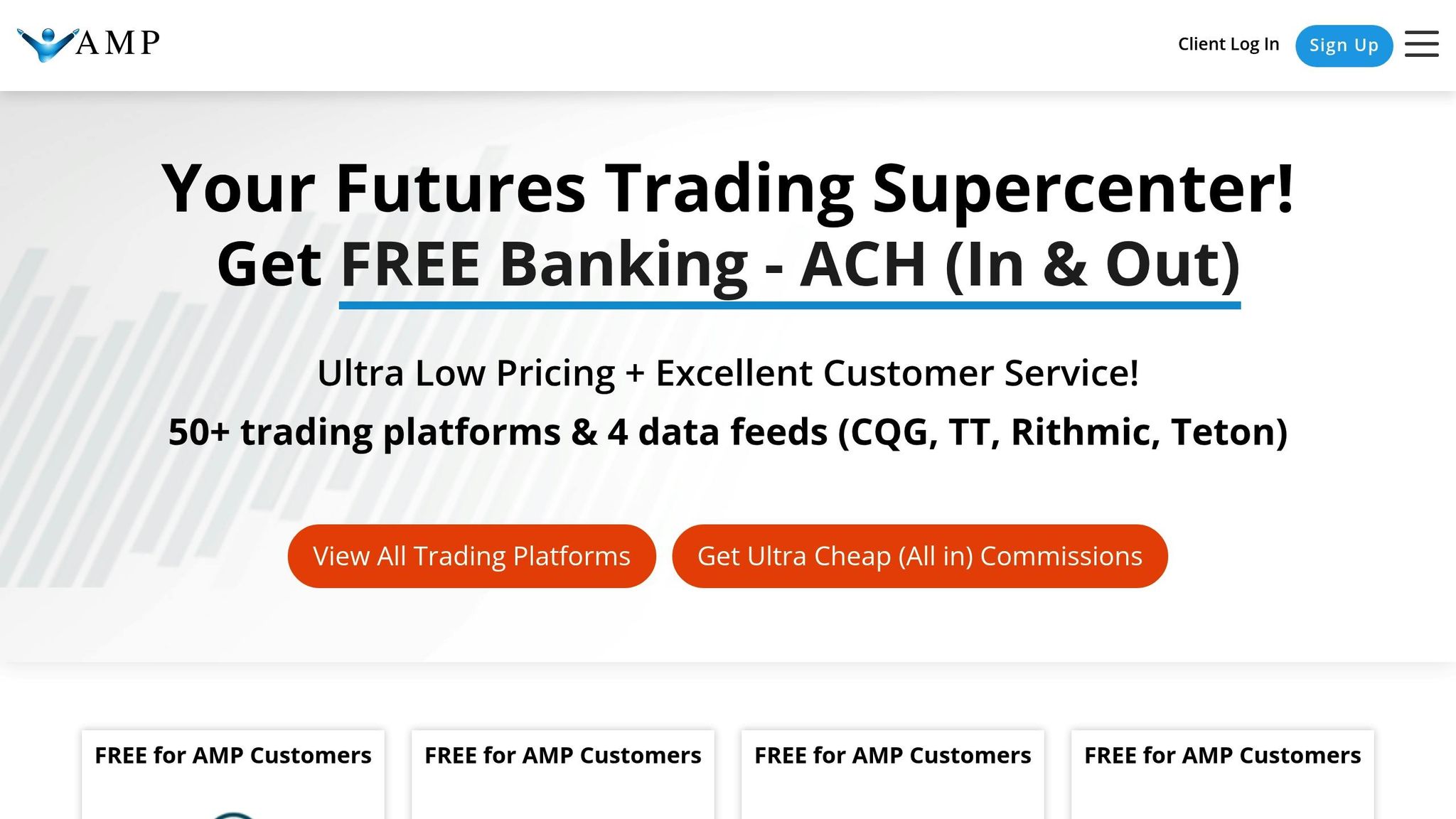
AMP Futures is a broker that aligns with the goal of low-cost trading. It offers competitive commission rates and services designed for both individual traders and introducing brokers. With direct market access and flexible pricing, it’s a platform worth exploring for futures trading.
Commission Rates
AMP Futures charges per-contract commissions, starting at $0.25 per side for high-volume traders. Most retail traders, however, can expect costs between $0.50 and $1.50 per contract. For instance, trading an E-mini S&P 500 contract typically costs $0.85, while agricultural futures average around $1.25.
The platform also provides volume-based discounts, automatically lowering your commission rates as your trading activity increases. If you trade more than 1,000 contracts per month, you may qualify for rates below $0.75 per contract across most markets.
Keep in mind that there are additional fees that could impact your overall trading costs.
Additional Fees
While AMP Futures is transparent about its pricing, there are extra costs to consider. Exchange fees range from $1.18 to $4.62 per round turn, depending on the contract. Additionally, NFA regulatory fees add $0.02 per contract. If you need real-time market data, subscriptions are an extra expense – CME Group data costs $105 per month, and CBOT data is priced at $85 per month.
The good news? AMP Futures doesn’t charge inactivity fees or penalize you for falling below a minimum balance. However, wire transfer fees are $25 for domestic transfers and $50 for international transfers.
Margin Requirements
Understanding margin requirements is crucial for managing your trading capital. AMP Futures adheres to exchange minimums but offers reduced day trading margins, which can be 25% to 50% lower than overnight requirements. For example, while the overnight margin for an E-mini S&P 500 contract is $13,200, the day trading margin could be as low as $6,600.
To help you stay on top of your account, the platform provides real-time margin monitoring through its trading software. For qualified accounts, portfolio margining is also available, significantly reducing margin requirements for spread trades and hedged positions.
Platform Features
AMP Futures supports a variety of professional trading platforms, including NinjaTrader, Sierra Chart, and MultiCharts, giving you the flexibility to choose one that suits your trading approach.
The broker offers direct market access with co-located servers, ensuring faster trade execution. For algorithmic traders, API connectivity is available, allowing you to link automated systems directly to the markets. Mobile trading is supported through most platforms, compatible with both iOS and Android devices.
For those looking to practice or refine strategies, paper trading accounts are available, providing access to live market data without risking real money. Additionally, traders can access historical market data for backtesting and strategy development.
4. Optimus Futures
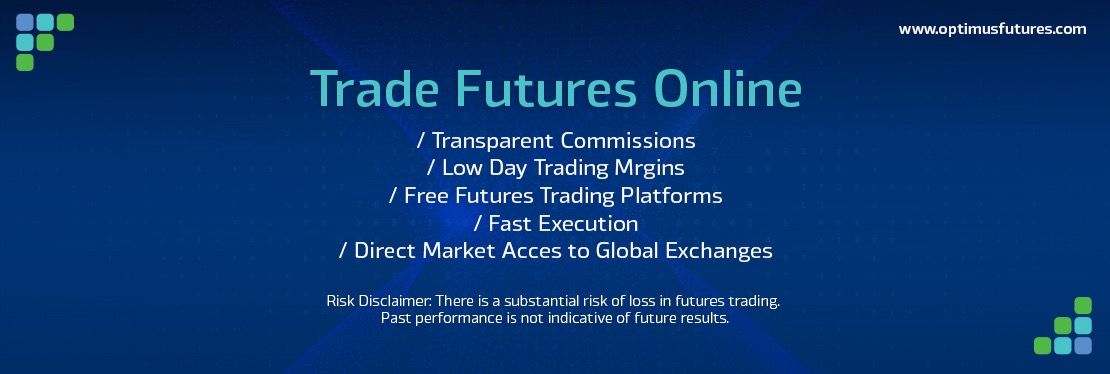 Optimus Futures combines competitive commission rates with zero platform fees, offering traders professional-grade technology without monthly subscription costs that can eat into profits.
Optimus Futures combines competitive commission rates with zero platform fees, offering traders professional-grade technology without monthly subscription costs that can eat into profits.
Commission Rates
Optimus offers straightforward pricing starting at $0.25 per side for Micros with volume discounts available for active traders. Unlike brokers with complex tiered pricing structures, Optimus keeps it simple – one base rate with transparent volume-based reductions. The listed rates don’t include exchange and regulatory fees, which are passed through at cost.
Hidden Fees
Optimus maintains transparency with their fee structure. Exchange fees (approximately $1.28 per ES contract), NFA fees ($0.02 per contract), and wire transfer fees ($30 domestic, $45 international) are clearly disclosed. There are no monthly platform fees, no inactivity fees, and no account maintenance charges. Real-time market data (level 1) is included at no additional cost if you place 10 trades/month.
Margin Requirements
Optimus offers competitive intraday margins across all major contracts. Micro E-minis require just $50 intraday margin, while standard E-minis (ES, YM, RTY) require $500. Crude Oil and E-mini NASDAQ are available at $1000 intraday margin, and Gold at $500. These reduced margins help active day traders maximize their capital efficiency while maintaining proper risk management.
Platform Features
Optimus provides a complete trading ecosystem across three platforms at zero cost:
Optimus Flow (Desktop): All premium features included – professional ladder-style DOM trading, integrated footprint charts, volume profile analysis, and delta tracking. These advanced order flow tools typically cost $150-$360/month on standalone platforms. Available for Windows with multi-monitor support and customizable layouts.
Optimus Web: Full-featured browser-based trading platform accessible from any device without downloads or installations. Trade directly from your web browser with real-time quotes, advanced charting, bracket orders, and position management. Perfect for trading away from your primary workstation.
Optimus Mobile: Native iOS and Android apps for trading and monitoring positions on the go. Place orders, manage brackets, view real-time quotes, and track P&L from your smartphone or tablet. Stay connected to your positions anywhere.
Platform compatibility: Beyond the Optimus suite, connect to 20+ professional platforms, including Sierra Chart, TradingView, MultiCharts, and Bookmap.
5. Interactive Brokers (IBKR)
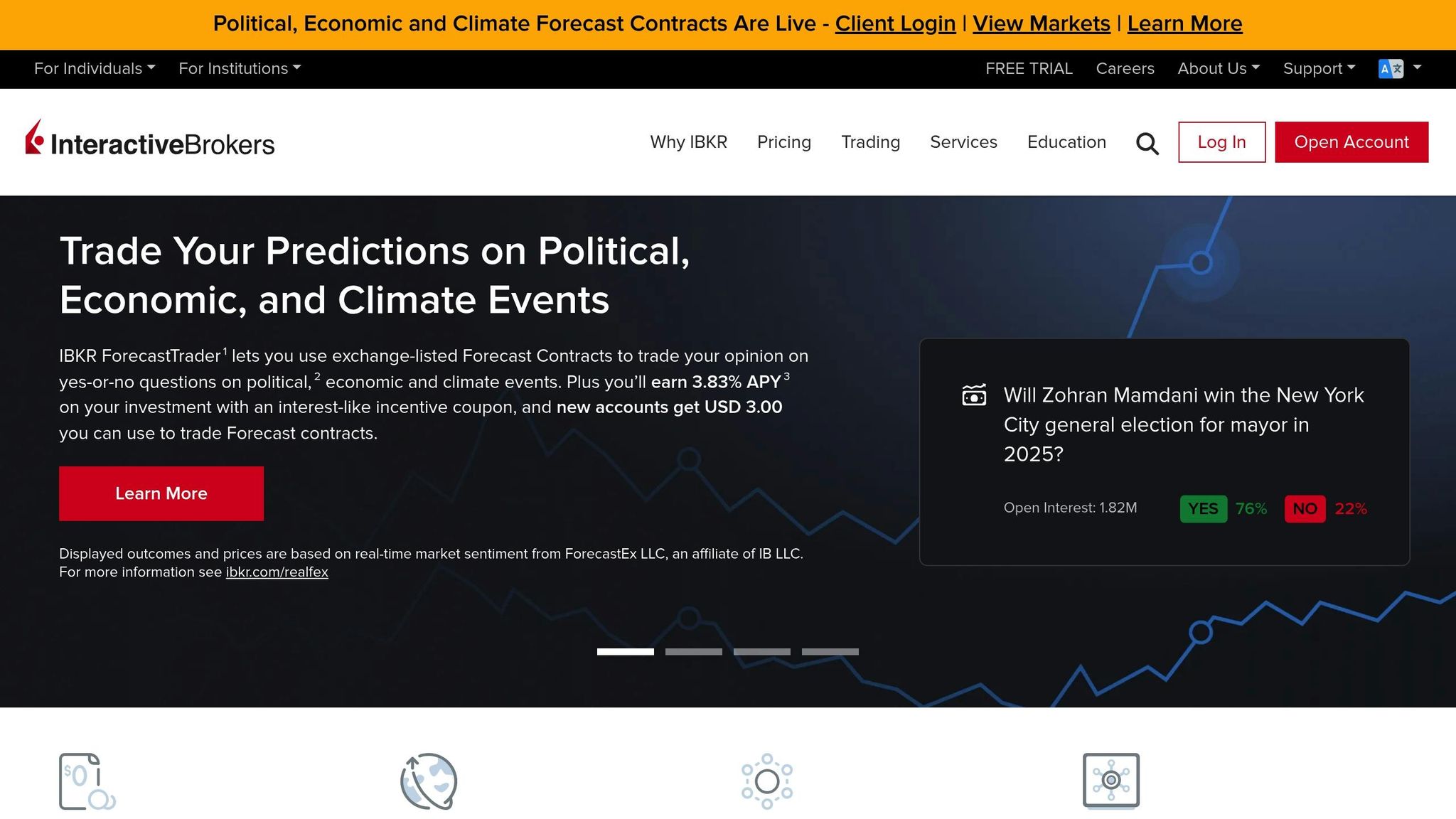
Interactive Brokers stands out as a trusted name in the world of low-cost futures trading. Known for its competitive pricing and extensive market access, the platform caters to both retail traders and institutional clients, offering direct access to futures markets across the globe. It combines efficiency with advanced risk management tools, making it a strong contender for active traders.
Commission Rates
Interactive Brokers offers a tiered pricing structure that starts at $0.85 per contract for up to 300 contracts, dropping to $0.65 beyond that, and as low as $0.15 for over 10,000 contracts. Alternatively, traders can opt for a fixed rate of $2.00 per contract for more predictable pricing.
For active traders, especially those dealing with popular futures like E-mini S&P 500 contracts, the $0.85 base rate is highly appealing. Volume discounts are applied automatically based on the previous month’s trading activity, ensuring savings for frequent traders. However, it’s important to account for additional fees alongside these commissions.
Additional Fees
Interactive Brokers has some extra costs to keep in mind. These include exchange fees ranging from $1.02 to $4.50 per round turn, NFA regulatory fees of $0.02 per contract, and market data subscriptions that can vary between $4.50 and over $100 per month. For instance, CME Group Level 1 data costs $4.50 per month, while professional data packages can exceed $100 monthly.
There’s also a $10 monthly fee for accounts with equity below $100,000 and commissions under $30. This fee is waived for accounts exceeding $100,000 or those generating enough trading activity. Additionally, wire transfer fees are $10 for domestic and $13 for international transfers.
Margin Requirements
Interactive Brokers uses a risk-based portfolio margining system that can significantly lower margin requirements – by 25% to 50% – for spread trades and hedged positions. Day trading margins are also reduced, typically 25% to 50% lower than overnight margins. For example, while the overnight margin for an E-mini S&P 500 contract is $13,200, day traders can trade with margins as low as $6,600 during active market hours.
The platform’s Risk Navigator tool provides real-time margin monitoring, allowing traders to model the impact of trades before execution. Cross-margining between related products is also available, helping traders optimize their capital for more complex strategies.
Platform Features
Interactive Brokers offers a variety of trading platforms tailored to different user preferences. The Trader Workstation (TWS) is the flagship platform, delivering advanced charting, options analytics, and algorithmic trading tools. For those on the go, the IBKR Mobile app provides full functionality for both iOS and Android devices.
One of the platform’s standout features is its global market access, which includes futures trading on over 150 exchanges worldwide. This covers major U.S. markets like CME, CBOT, and NYMEX, as well as international exchanges across Europe, Asia, and other regions.
For automated trading, IBKR supports API connectivity, compatible with programming languages like Python, Java, and C++. A paper trading environment is also available, replicating live market conditions for strategy testing without risking real money.
Traders can take advantage of advanced order types, such as bracket orders, trailing stops, and algorithmic strategies like TWAP and VWAP. Additionally, the platform offers the IBot robo-advisor feature, which can assist with portfolio allocation, though its primary focus is on stocks and ETFs rather than futures.
6. Webull
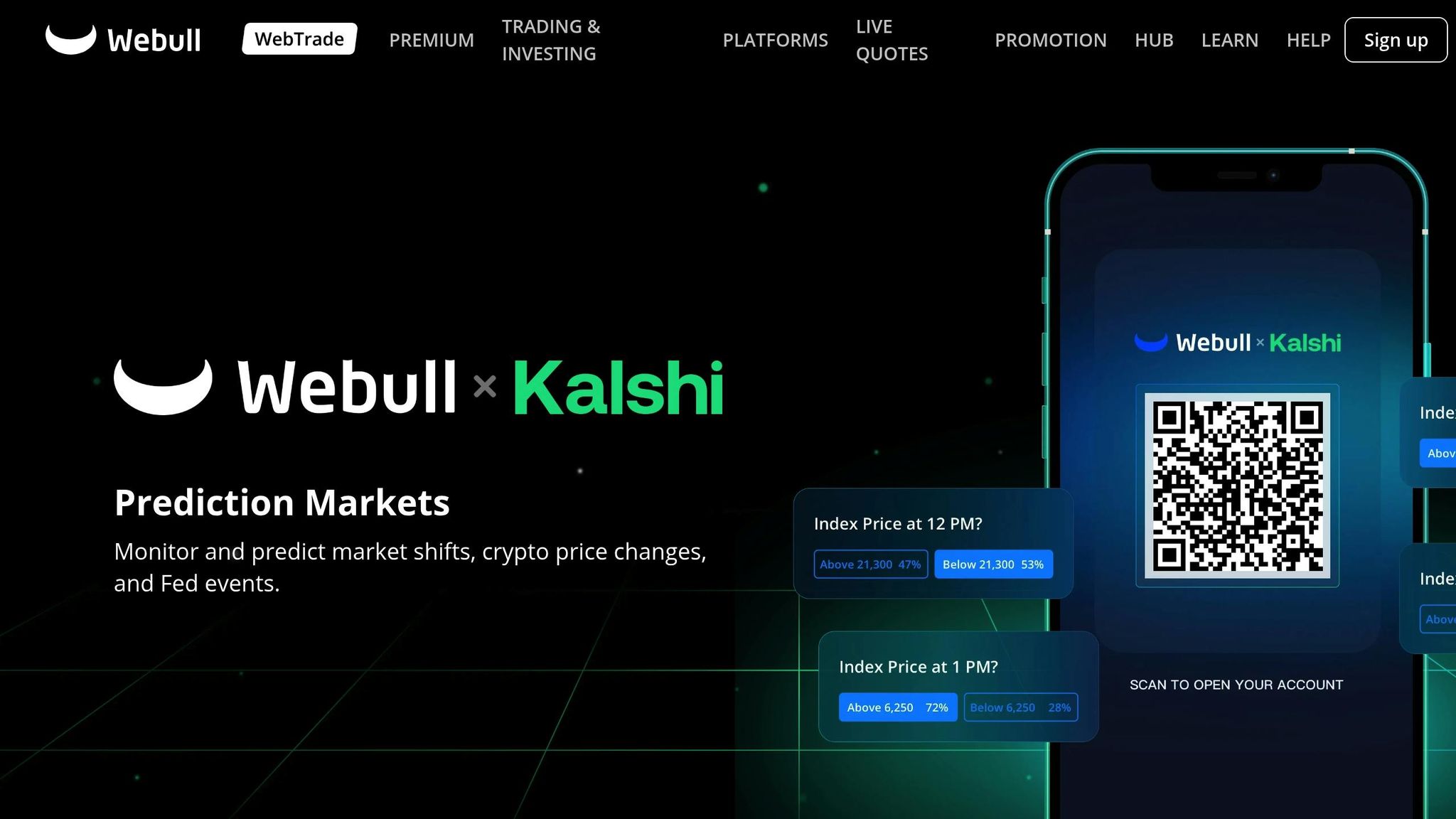
If you’re looking for a trading platform that balances ease of use with affordability, Webull is a solid option for futures trading. It’s especially popular with retail traders making the jump from stocks to futures. While it may not boast the rock-bottom commissions that high-frequency traders might seek, Webull’s straightforward design and pricing make it appealing for those who trade less frequently and value transparency.
Commission Rates
Webull keeps things simple with a flat fee per futures contract trade, applying to both the opening and closing sides. This means a complete round-turn trade costs twice the base fee, making it easy to calculate expenses. Although this pricing structure might not suit very active traders, it remains competitive for those who prefer a no-fuss, predictable approach to trading costs.
Hidden Fees
Webull stands out by avoiding the complex, layered fees seen on some platforms. While exchange and regulatory fees still apply – and may vary depending on the contract – Webull offers free Level 1 market data for major futures, which helps keep costs down. However, if you need advanced or professional-level market data feeds, you may need to purchase a subscription. The platform also skips account maintenance fees and provides cost-effective electronic transfer options, though wire transfers could come with extra charges.
Platform Features
Webull’s futures trading interface builds on its already popular stock platform. It includes real-time charts with technical indicators, advanced order types like stop-loss, take-profit, and bracket orders, and seamless trading on both mobile and web platforms. For traders on the go, the mobile app – available for iOS and Android – delivers a smooth experience.
Desktop users aren’t left out, either. Webull offers a web-based platform that doesn’t require any downloads. It features customizable watchlists, multiple chart layouts, and the ability to execute trades right from the charts. While it may not match the advanced tools of specialized futures platforms – such as deep market depth views or algorithmic trading capabilities – it does provide access to major U.S. futures exchanges and a wide selection of popular contracts. Plus, a paper trading feature lets users practice strategies without putting real money on the line.
Margin Requirements
Webull sets its margin requirements as a percentage of the exchange minimum for day trades, with higher margins required for holding positions overnight. The platform includes real-time margin calculations and risk monitoring tools to help traders manage their positions and avoid margin calls. That said, it lacks more advanced margining options like portfolio or cross-margining, which might be a drawback for traders with more complex strategies.
Platform Comparison: Pros and Cons
Here’s a quick breakdown of how these trading platforms stack up when it comes to commission structures, standout features, and potential downsides. The best choice for you will depend on your trading style, level of experience, and budget.
| Platform | Commission Structure | Key Strengths | Main Weaknesses | Best For |
|---|---|---|---|---|
| NinjaTrader | Lease model with per-contract fees | Advanced charting, algorithmic trading, extensive customization | Higher costs for casual traders; steep learning curve | Active traders, algo traders, professionals |
| Tradovate | Subscription-based with low per-contract rates | Cloud-based platform with a modern interface and competitive pricing | Limited third-party integrations; newer market presence | Cost-conscious active traders |
| AMP Futures | Low flat-rate per contract | Competitive commissions and multiple platform options | Basic proprietary platform; limited research tools | High-volume traders prioritizing cost |
| Optimus Futures | $0.25 per side for Micro, with zero platform fees | All premium features included; 20+ platform compatibility | Mid-range commission rate (offset by zero platform fees) | Order flow traders, platform users seeking zero subscription fees |
| Interactive Brokers | Tiered pricing based on volume | Global market access, advanced tools, and institutional-grade features | Complex fee structure that may be challenging for beginners | Sophisticated traders, international markets |
| Webull | Simple flat fee per contract | User-friendly interface, transparent pricing, and mobile-first design | Higher costs for very active traders; fewer advanced features | Beginner to intermediate traders |
Now, let’s dive into what sets each platform apart:
NinjaTrader is a go-to for professional and algorithmic traders who need advanced charting and customization. However, its lease model can be pricey for casual users, and the platform’s complexity may take some time to master.
Tradovate shines with its cloud-based design and affordable subscription pricing. While it’s a strong option for cost-conscious traders, its newer presence in the market means it offers fewer third-party integrations.
AMP Futures is all about low flat-rate commissions, making it ideal for high-volume traders. That said, its proprietary platform feels basic and lacks the in-depth research tools some may need.
Optimus Futures takes a different approach by eliminating platform fees entirely. While their $0.25 per side commission isn’t the lowest, traders save $150-$360/month by getting Optimus Flow with all premium features including advanced DOM, footprint charts, and volume profile analysis. For traders using professional platforms, the total monthly cost often beats discount brokers charging platform subscription fees.
Interactive Brokers stands out for its global market access and institutional-level tools, making it a favorite for sophisticated traders. However, its tiered pricing structure can be overwhelming for beginners trying to navigate the fees.
Webull offers a straightforward fee model and a mobile-friendly experience, making it perfect for those transitioning from stock trading to futures. But for very active or professional traders, the platform may feel limited in advanced features.
Each platform has its strengths and weaknesses, so your decision should hinge on what features align best with your trading priorities.
Final Recommendations
When choosing the best futures trading platform, it’s all about finding the right balance between costs and features that suit your trading style.
For high-volume traders, platforms offering flat-rate pricing can provide cost predictability, making it easier to manage expenses. On the other hand, beginners might prefer platforms with straightforward, mobile-friendly flat-fee structures that simplify the trading process.
If you’re an active trader, advanced tools like detailed charting and algorithmic trading features might be worth the extra expense. These tools are designed to support more complex, data-driven strategies. Subscription-based platforms can offer consistent monthly costs, while tiered pricing models might appeal to experienced traders looking for discounts as their trading volume increases, especially when trading across global markets.
For order flow and DOM traders, Optimus Futures offers a compelling value proposition. Their zero platform fee model means traders accessing professional tools like advanced DOM, footprint charts, and volume profile analysis pay nothing beyond commissions. With compatibility across 20+ platforms including Sierra Chart, TradingView, and Bookmap – Optimus serves traders who prioritize professional technology without monthly subscriptions eroding their capital. For traders doing 100-500 contracts monthly and using professional platforms, total monthly costs (commission + platform fees) often favor Optimus despite mid-range per-contract rates.
Ultimately, the best platform is the one that aligns with your trading habits, the tools you need, and a fee structure that complements your strategy. While low commissions are tempting, don’t overlook execution quality and platform reliability. A platform that integrates seamlessly with your overall trading approach will often prove to be the most cost-effective choice in the long run.
FAQs
How do hidden fees and extra costs affect the overall expense of a futures trading platform?
Hidden fees and extra costs can quietly eat into your trading profits when using a futures trading platform. These can include per-contract commissions, market data fees, account maintenance charges, and exchange or regulatory fees. While they might not be immediately obvious, they can pile up quickly, especially for active traders making frequent transactions.
Take this scenario: a platform might promote low commission rates to attract users, but then tack on additional fees for each contract or for accessing specific market data. Over time, these seemingly small charges can significantly shrink your profit margins. That’s why it’s crucial to dig into the platform’s full fee structure upfront. Understanding these costs allows you to assess whether the platform fits your budget and supports your trading approach.
What should I look for in a futures trading platform besides low commissions?
When picking a futures trading platform, it’s important to think beyond just low commission fees. Pay attention to the platform’s reliability, stability, and order execution speed, as these can have a direct effect on your trading results. Make sure the trading tools and charting features meet your needs, and that the platform is intuitive enough for your experience level.
You should also consider customer support availability, the security measures in place to safeguard your funds and personal data, and whether there are any hidden fees that might increase your overall trading costs. Another thing to look for is access to educational resources. These can help you refine your trading strategies and keep up with market trends. By carefully assessing these factors, you’ll be better equipped to choose a platform that fits your trading objectives.
What features should beginner traders look for in a futures trading platform?
For those just starting out in trading, it’s crucial to choose platforms that offer easy-to-navigate interfaces, detailed educational materials, and demo accounts. Demo accounts, in particular, let beginners practice trading in real-time conditions without putting actual money on the line.
Equally important are risk management features, like stop-loss and limit orders, which can help protect against large losses as you learn the ropes. These tools and resources not only make the learning process smoother but also give new traders a chance to build confidence, grasp market behavior, and refine their trading strategies in a safer, low-pressure setting.








